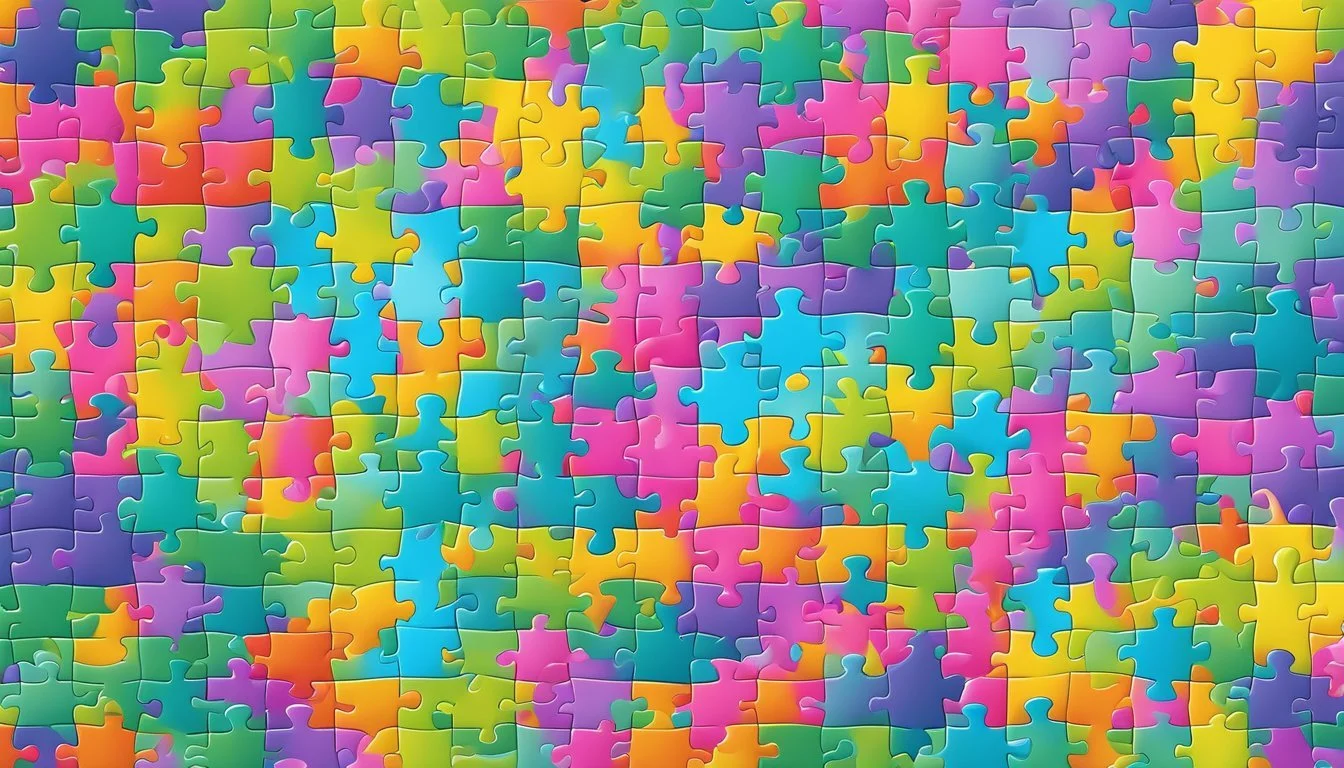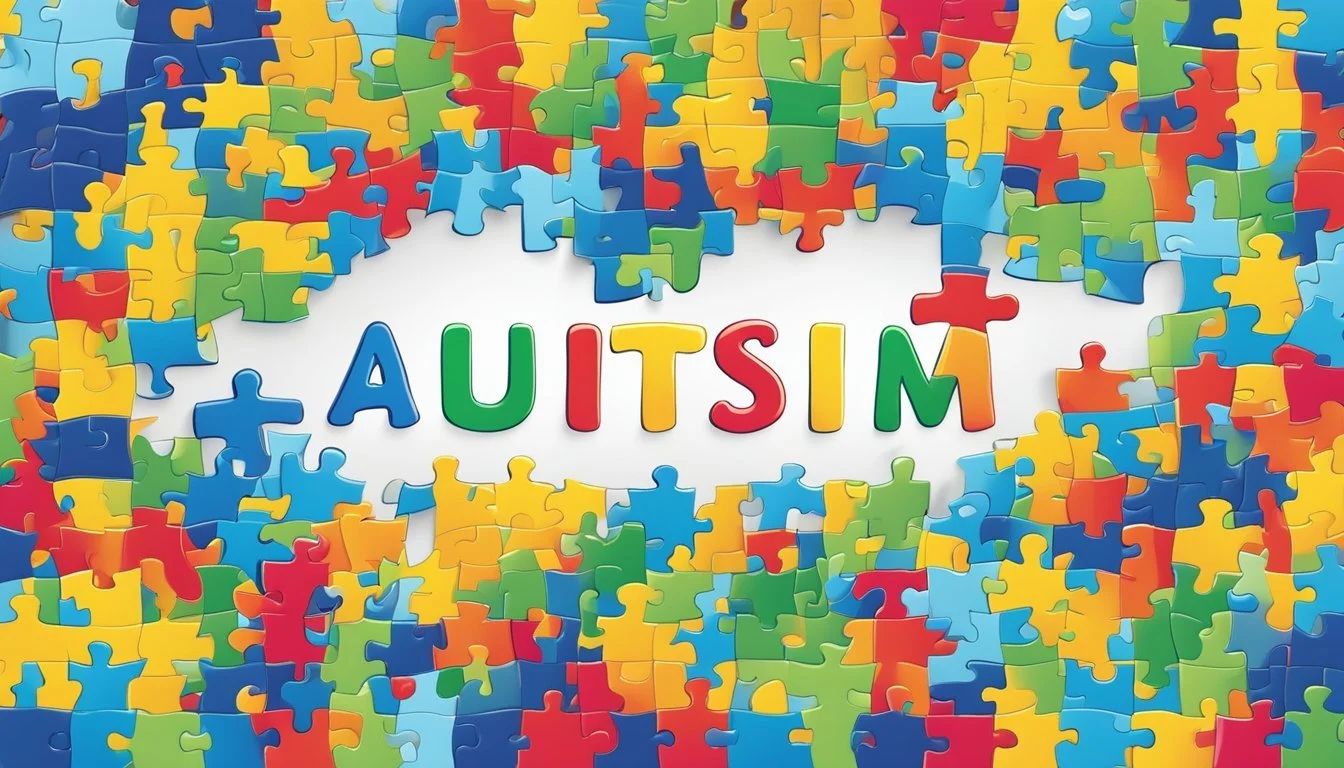Examining the Persistence of Autism Spectrum Disorders
Autism spectrum disorder (ASD) is a complex neurodevelopmental condition that affects individuals throughout their lives. Many parents and caregivers wonder if autism can go away as children grow older. While autism is a lifelong condition with no known cure, research suggests that some individuals may experience changes in symptom severity over time.
Recent studies have shown that autism characteristics can change significantly between ages 3 and 11. Some children may display a decrease in symptom severity, while others may show an increase. This variability highlights the importance of ongoing support and interventions tailored to each individual's needs.
Although autism itself does not disappear, early interventions and therapies can help improve communication, behavior, and skills for many people with ASD. These improvements may lead to better coping mechanisms and increased independence as individuals grow and develop. Understanding the potential for change in autism symptoms can provide hope and motivation for families navigating the challenges of ASD.
Understanding Autism Spectrum Disorder
Autism Spectrum Disorder (ASD) is a complex neurodevelopmental condition characterized by diverse challenges in social communication, behavior, and sensory processing. It affects individuals differently, with varying degrees of severity and manifestation.
Defining Autism Spectrum Disorders
ASD encompasses a range of conditions previously diagnosed separately, including autistic disorder, Asperger's syndrome, and pervasive developmental disorder not otherwise specified (PDD-NOS). Key features include:
Difficulties in social interaction and communication
Restricted interests and repetitive behaviors
Sensory sensitivities or aversions
These traits typically appear in early childhood and persist throughout life. The term "spectrum" reflects the wide variety of strengths and challenges each person with autism experiences.
Prevalence and Diagnosis
ASD affects approximately 1 in 36 children in the United States, according to recent estimates from the Centers for Disease Control and Prevention (CDC). Boys are four times more likely to be diagnosed than girls.
Diagnosis involves:
Developmental screenings
Observations of the child's behavior and interactions
There is no medical test for autism. Trained professionals use standardized diagnostic criteria to assess a child's development and behavior patterns.
Misconceptions About Autism
Several myths surround autism, often leading to misunderstandings:
Myth: Autism can be outgrown or cured. Fact: ASD is a lifelong condition, though symptoms may change over time.
Myth: All individuals with autism have intellectual disabilities. Fact: Autism occurs across the full range of intellectual abilities.
Myth: People with autism lack empathy or emotions. Fact: Many autistic individuals experience deep emotions and empathy, but may express them differently.
Myth: Vaccines cause autism. Fact: Extensive research has found no link between vaccines and autism.
Autism Through the Lifespan
Autism spectrum disorder (ASD) impacts individuals differently as they progress through various life stages. The manifestation and severity of autism characteristics can change significantly over time, influencing developmental milestones, social interactions, and daily functioning.
Early Childhood Development
Autism symptoms often emerge in the first few years of life. Early diagnosis and intervention are crucial for improving long-term outcomes. Research indicates that some children may experience changes in symptom severity between ages 3 and 11.
Early signs of ASD can include:
Delayed language development
Limited eye contact
Repetitive behaviors
Difficulty with social interactions
Early intervention programs focus on:
Speech and language therapy
Behavioral interventions
Occupational therapy
Social skills training
These targeted interventions aim to support developmental progress and enhance adaptive functioning. Some children may show significant improvements in symptoms as they grow older.
Transitioning Into Adulthood
The transition to adulthood presents unique challenges for individuals with autism. Support systems often change dramatically during this period, requiring careful planning and preparation.
Key aspects of the transition process include:
Vocational training
Higher education support
Independent living skills
Social and relationship guidance
Many adults with autism can lead fulfilling lives and pursue successful careers with appropriate support. Challenges may persist in areas such as social communication and executive functioning.
Employment opportunities vary widely based on individual strengths and needs. Some adults with autism excel in fields that leverage their unique abilities, such as technology, art, or specialized trades.
Aging with Autism
Research on autism in older adults is limited but growing. Long-term outcomes can vary significantly based on individual characteristics and life experiences.
Common concerns for aging adults with autism include:
Healthcare access
Social isolation
Financial planning
Caregiver support
Some older adults with autism may require ongoing support for daily living activities. Others may live independently and maintain successful careers throughout their lives.
Quality of life in older adults with autism can be enhanced through:
Continued social support
Engaging in meaningful activities
Access to appropriate healthcare services
Adaptations to living environments
Understanding the unique needs of older adults with autism is crucial for providing effective support and promoting well-being throughout the lifespan.
Therapeutic Interventions and Support
Effective interventions and support systems play a crucial role in helping individuals with autism manage symptoms and improve quality of life. These approaches focus on developing skills, enhancing communication, and fostering independence.
Behavior and Communication Therapies
Applied Behavior Analysis (ABA) is a widely used therapy for autism. It focuses on reinforcing desired behaviors and reducing challenging ones. ABA techniques can be tailored to each individual's needs and goals.
Speech and language therapy helps improve verbal and non-verbal communication skills. This may include exercises to enhance articulation, vocabulary, and sentence structure. Augmentative and alternative communication (AAC) devices can also be used to support those with limited speech.
Social skills training teaches individuals with autism how to interact effectively with others. This can involve role-playing, modeling appropriate behaviors, and practicing social cues. Group sessions often provide opportunities to apply these skills in real-world settings.
Educational and Occupational Support
Individualized Education Programs (IEPs) are designed to meet the unique learning needs of students with autism. These plans may include accommodations like extended test times, visual aids, or specialized instruction.
Occupational therapy helps individuals develop skills for daily living and independence. This can include fine motor skills, self-care routines, and sensory processing strategies. Therapists may use tools and adaptive equipment to support skill development.
Vocational training programs prepare individuals with autism for employment opportunities. These programs focus on job skills, workplace communication, and career exploration. Job coaches can provide ongoing support in the workplace.
Integrative Approaches
Sensory integration therapy addresses sensory processing difficulties common in autism. Therapists use various activities to help individuals respond appropriately to sensory input. This can improve attention, behavior, and daily functioning.
Cognitive Behavioral Therapy (CBT) can be effective for managing anxiety and depression in individuals with autism. CBT techniques are often adapted to meet the unique needs of those on the spectrum.
Some individuals with autism may benefit from medication to manage co-occurring conditions like anxiety, ADHD, or sleep disorders. Medications are typically used in conjunction with other therapies and interventions.
Living with Autism
Individuals with autism spectrum disorder (ASD) navigate daily life with unique perspectives and challenges. They develop strategies to manage social interactions, leverage their strengths, and cope with difficulties.
Social Skills and Adaptation
People with ASD often struggle with social cues and interactions. Many learn techniques to navigate social settings more comfortably. Some practice scripted responses or rehearse conversations beforehand.
"Masking" involves hiding autistic traits to fit in, though this can be mentally taxing. Social skills training can help improve communication and relationship-building abilities.
Establishing routines provides stability and reduces anxiety for many with ASD. Clear schedules and predictable environments help them feel more at ease in daily life.
Embracing Unique Strengths
ASD often comes with exceptional abilities in specific areas. Some excel at pattern recognition, memory tasks, or creative pursuits. Others display intense focus and expertise in their areas of interest.
Many find fulfillment by leveraging these strengths in their careers or hobbies. A deep fascination with trains, for example, could lead to a successful career in transportation engineering.
Embracing neurodiversity means recognizing autism as part of one's identity rather than a flaw to be fixed. This perspective can boost self-esteem and confidence.
Coping with Challenges
Sensory sensitivities are common in ASD. Individuals may use noise-canceling headphones, sunglasses, or fidget toys to manage overwhelming stimuli.
Anxiety and depression often co-occur with autism. Therapy, medication, and mindfulness practices can help manage these conditions.
Self-care is crucial. Regular exercise, healthy eating, and adequate sleep contribute to overall well-being. Engaging in enjoyable activities and special interests provides stress relief.
Support groups offer valuable connections with others who share similar experiences. These communities provide understanding, advice, and a sense of belonging.
The Science Behind ASD
Autism spectrum disorder (ASD) has complex origins rooted in genetics, neurology, and environmental influences. Research continues to uncover the intricate biological mechanisms underlying this condition.
Genetic and Neurological Factors
Genetic factors play a significant role in ASD. Studies have identified hundreds of genes associated with autism risk. These genes often affect brain development, synaptic function, and neural connectivity.
Neuroimaging research reveals differences in brain structure and function in individuals with ASD. Some areas may show increased connectivity, while others display reduced connectivity.
Atypical patterns of brain growth have been observed, with rapid early brain overgrowth followed by slowed growth in later childhood. This affects regions involved in social communication and behavior regulation.
Environmental Influences
Environmental factors can interact with genetic predispositions to influence ASD development. Prenatal exposures to certain medications, toxins, or infections may increase autism risk.
Maternal health during pregnancy, including factors like stress, nutrition, and immune function, can impact fetal brain development. Advanced parental age has also been linked to increased ASD risk.
Postnatal factors such as early childhood experiences and environmental toxins may contribute to ASD expression. However, their exact roles remain under investigation.
Current Research and Insights
Recent neurodevelopmental research focuses on understanding the timing and mechanisms of brain changes in ASD. Scientists are exploring how genes and environment interact to shape brain development.
Studies on brain plasticity offer hope for potential interventions. Early intensive therapy has shown promise in improving outcomes for some children with ASD.
Emerging research investigates the role of the gut microbiome in ASD, exploring potential connections between digestive health and brain function.
Advances in neuroimaging techniques allow for more detailed study of brain activity and connectivity in individuals with ASD, providing new insights into neural differences.
Navigating Additional Challenges
Autism presents ongoing challenges beyond core symptoms. Individuals often face co-occurring conditions, behavioral regulation difficulties, and communication hurdles that require targeted strategies and support.
Co-Occurring Conditions
Many autistic individuals experience additional mental health or developmental disorders. Attention Deficit Hyperactivity Disorder (ADHD) commonly co-occurs, affecting focus and impulse control. Anxiety and depression are also prevalent, potentially exacerbating social difficulties.
Oppositional Defiant Disorder may manifest in some cases, leading to behavioral challenges. Sensory sensitivities can cause discomfort in certain environments.
Identifying and addressing these co-occurring conditions is crucial. Professional diagnosis and tailored treatment plans can significantly improve quality of life. Therapy, medication, and behavioral interventions may be recommended based on individual needs.
Behavioral and Emotional Regulation
Autistic individuals often struggle with managing emotions and behaviors. Meltdowns or shutdowns can occur when overwhelmed. Anxiety may lead to repetitive behaviors or rigid routines.
Developing coping strategies is essential. These may include:
Deep breathing exercises
Sensory tools (e.g. fidget toys)
Scheduled breaks in low-stimulus environments
Visual schedules to increase predictability
Cognitive Behavioral Therapy can help identify triggers and develop healthy responses. Mindfulness techniques may also prove beneficial for some individuals.
Parents and caregivers play a crucial role in teaching and reinforcing positive behavioral strategies.
Communication and Language Development
Language delays and communication difficulties are common in autism. Some individuals may be non-verbal or have limited speech. Others might struggle with pragmatic language skills, such as understanding sarcasm or maintaining conversations.
Speech therapy can be highly effective in improving language skills. Approaches may include:
Picture exchange systems
Sign language
Augmentative and alternative communication devices
Visual aids, social stories, and role-playing exercises can help teach social communication skills. Encouraging communication in everyday settings is vital for ongoing development.
For those with more advanced language skills, focusing on nuanced communication aspects like tone of voice and body language can be beneficial.
Diagnosis and Identification
Accurate diagnosis of autism spectrum disorder (ASD) involves comprehensive evaluation by specialists using established criteria. Early identification allows for timely interventions that can significantly impact developmental outcomes.
Assessment and the DSM-5
The Diagnostic and Statistical Manual of Mental Disorders, Fifth Edition (DSM-5) provides standardized criteria for ASD diagnosis. It outlines two main areas: persistent deficits in social communication and interaction, and restricted, repetitive patterns of behavior, interests, or activities.
Clinicians use various tools to assess these criteria, including:
Autism Diagnostic Observation Schedule (ADOS)
Autism Diagnostic Interview-Revised (ADI-R)
Childhood Autism Rating Scale (CARS)
These assessments involve observation, parent interviews, and structured activities to evaluate a child's behavior and development.
Recognizing Signs in Children
Early signs of autism can appear in infancy or early childhood. Parents and caregivers should be aware of potential indicators:
Limited eye contact
Delayed language development
Lack of gesturing or pointing
Unusual reactions to sensory stimuli
Repetitive behaviors or movements
It's important to note that these signs can vary widely among individuals. Some children may show clear signs by 18 months, while others might not be diagnosed until later childhood.
Beyond Misdiagnosis
Misdiagnosis can occur due to overlapping symptoms with other conditions. Conditions that may be mistaken for ASD include:
Language disorders
Intellectual disability
Attention-deficit/hyperactivity disorder (ADHD)
Anxiety disorders
Proper differential diagnosis is crucial. It involves ruling out other conditions and considering co-occurring disorders. A multidisciplinary approach, including input from psychologists, speech therapists, and occupational therapists, can help ensure accurate identification.
Regular re-evaluation is essential, as developmental progress can impact symptom presentation over time.






